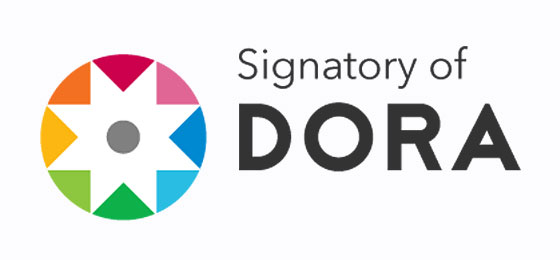Digitization and music global value chain: an evolutionary approach to the emergency of aggregators in the Brazilian market
DOI:
https://doi.org/10.1590/s0102-6992-201934010004Keywords:
Creative Industries, Global Value Chain, Music, Digital Aggregators, BrazilAbstract
This paper analyzes the impact of digitization on the Music Global Value Chains (GVC), underlining the Brazilian market. In this sense, it observes the majors labels’ crisis and the digital aggregators emergence within this value chain. With this main objective, it adapts the governance concept from GVC approach to the creative industries context according to the Evolutionary economics perspective, combining the Veblenian microeconomics with the Neo-Schumpeterian macroeconomics. It concludes that aggregators’ rising is due to a successful adaptation to the new technological paradigm and the development of new tools for consumption habits formation, assuring the structuration of the expectations from consumers as well as firms such as indie labels and streaming platforms.
Downloads
References
AGLIETTA, M. Capitalism at the turn of the century: regulation theory and the challenge of social change. New Left Review, n. 232, London, Nov./Dez. 1998. [ Links ]
ANDERSON, C. The long tail: why the future of business is selling less of more. New York: Hyperion, 2006. [ Links ]
ANDERSON, P.; TUSHMAN, M. Technological discontinuities and organizational environments. Administrative Science Quarterly, v. 31, n. 3, p. 439-465, 1986. [ Links ]
ARGYROUS, G.; SETHI, R. The theory of evolution and the evolution of theory: veblen’s methodology in contemporary perspective. Cambridge Journal of Economics, v. 20, p. 475-495, 1996. [ Links ]
ASSOCIAÇÃO BRASILEIRA DOS PRODUTORES DE DISCO. Mercado brasileiro de música. Rio de Janeiro: ABPD, 2016. [ Links ]
ATKISON, G.; OLESON, T. Institutional inquiry: the search for similarities and differences. Journal of Economic Issues, v. 30, n. 3, p. 701-718, 1996. [ Links ]
BAIR, J. Global commodity chain: genealogy and review. In: Bair, J. (Ed.). Frontiers of commodity chain research, p. 1-35. Redwood City (CA): Stanford University Press, 2009. [ Links ]
BOURREAU, M.; GENSOLLEN, M.; MOREAU, F. The impact of a radical innovation on business models: incremental adjustments or big bang? Industry and Innovation, v. 19, n. 5, p. 415-435, 2012. [ Links ]
BOURREAU, M.; GENSOLLEN, M.; MOREAU, F.; WAELBROECK, P. “Selling less of more?” The impact of digitization on record companies. Journal of Cultural Economics, v. 37, p. 327-346, 2013. [ Links ]
CAVES, R. Creative industries: contracts between art and commerce. Cambridge (MA): Harvard University Press, 2000. [ Links ]
COASE, R. H. The nature of the firm. Economica, New Series, v. 4, n. 16, p. 386-405, 1937. [ Links ]
CONCEIÇÃO, O. A. C. O conceito de instituição nas modernas abordagens institucionalistas. Revista de Economia Contemporânea, v. 6, n. 2, p. 119-146, 2002. [ Links ]
____. A abordagem regulacionista e o meio ambiente institucional. IV Encontro Nacional de Economia Política, Porto Alegre, 1999. [ Links ]
DOLATA, U. The music industry and the Internet: a decade of disruptive and uncontrolled sectoral change. SOI Discussion Paper, v. 2, p. 1-31, 2011. [ Links ]
DOLFSMA, W. Institutional economics and the formation of preferences: the advent of pop music. Cheltenham (UK): Edward Elgar, 2004. [ Links ]
DOSI, G. Technological paradigms and technological trajectories: a suggested interpretation of the determinants and directions of technical change. Research Policy, v. 11, n. 3, p. 147-162, 1982 [ Links ]
DOSI, G.; NELSON, R. An introduction to evolutionary theories in economics. Journal of Evolutionary Economics, v. 4, n. 3, p. 153-172, 1994. [ Links ]
ELBERSE, A. Blockbusters: hit-making, risk-taking, and the big business of entertainment. New York: Henry Holt and Company, 2013. [ Links ]
FRANCISCO, P.; VALENTE, M. Música e gestão coletiva no Brasil: direitos autorais, Ecad e o ambiente digital, 2016 (no prelo). [ Links ]
FREEMAN, C.; PEREZ, C. In: DOSI et alii. Technical change and economic theory , p. 38-66. London: Pinter Publishers, 1988. [ Links ]
GALUZSKA, P. Music aggregators and intermediation of the digital music market. International Journal of Communication, v. 9, p. 254-273, 2015. [ Links ]
GEREFFI, G. Global commodity chains: new forms of coordination and control among nations and firms in international industries. Competition and Change, v. 1, n. 4, p. 427-439, 1996. [ Links ]
____. Global production systems and Third World development. In: STALLINGS, B. (Ed.). Global change, regional response: the new international context of development, p. 100-142. Cambridge (UK): Cambridge University Press, 1995. [ Links ]
____. The organization of buyer-driven global commodity chains: how U.S. retailers shape overseas production networks. In: GEREFFI, G.; KORZENIEWICZ, M. (Orgs.). Commodity chains and global capitalism, p. 95-122. Westport (CT): Praeger, 1994. [ Links ]
GEREFFI, G.; HUMPHREY, J.; STURGEON, T. The governance of global value chains. Review of International Political Economy, v. 12, n. 1, p. 78-104, 2005. [ Links ]
HARVEY, D. The condition of postmodernity: an enquiry into the origins of cultural change. Cambridge (MA): Blackwell Publishers, 1989. [ Links ]
HEILBRONER, R. L. The problem of value. In: HEILBRONER, R. L. Behind the veil of economics, p. 104-133. New York: Norton, 1988. [ Links ]
HODGSON, G. Institutions and individuals: interaction and evolution. Organization Studies, v. 28, n. 1, p. 95-116, Jan. 2007. [ Links ]
____. What are institutions? Journal of Economic Issues, Ano XL, n. 1, p. 1-25, Mar. 2006. [ Links ]
____. The evolution of institutions: an agenda for future theoretical research. Constitutional Political Economy, n. 13, p. 111-127, 2002. [ Links ]
____. The approach of institutional economics. Journal of Economic Literature, Ano XXXVI, p. 166-192, Mar. 1998. [ Links ]
____. From micro to macro: the concept of emergence and the role of institutions. International seminar “Institutions and economic development: towards a comparative perspective on State reform”. Rio de Janeiro: UFRJ, 12-14 Nov. 1997. [ Links ]
____. Thorstein Veblen and post-Darwinian economics. Cambridge Journal of Economics, v. 16, n. 3, p. 285-301, Set. 1992. [ Links ]
HOPKINS, T. K.; WALLERSTEIN, I. Commodity chains in the world economy prior to 1800. Review, v. 10, n. 1, p. 157-170, 1986. [ Links ]
INTERNATIONAL FEDERATION OF THE PHONOGRAPHIC INDUSTRY. Global music report. London: Ifpi, 2016. [ Links ]
____. Recording industry in number: the recorded music market in 2011. London: Ifpi, 2012. [ Links ]
LEE, J. Global commodity chains and global value chains. In: Danemark, R. A. (Ed.). The international studies encyclopedia, p. 2987-3006. Oxford: Wiley-Blackwell, 2010. [ Links ]
LI, J. The development of the digital music industry in China during the first decade of the 21st century with particular regard to industrial convergence. International Journal of Music Business Research, v. 2 n. 1, 2013. [ Links ]
MATOS, M. Perspectivas de investimento na indústria musical. Rio de Janeiro: BNDES, 2008. [ Links ]
MOREAU, F. The Disruptive nature of digitization: the case of the recorded music industry. International Journal of Arts Management, v. 15, n. 2, 2013. [ Links ]
NELSON, R. Recent evolutionary theorizing about economic change. Journal of Economic Literature, v. 33, n. 1, p. 48-90, 1995. [ Links ]
NORDGARD, D. Assessing music streaming and industry disruptions, 2016 (no prelo). [ Links ]
NORTH, D. Understanding the process of economic change. Princeton (NJ): Princeton University Press, 2005. [ Links ]
PEREZ, C. Technological revolutions and techno-economic paradigms. Working Papers in Technology Governance and Economic Dynamics, n. 20, 2009a. [ Links ]
____. The double bubble at the turn of the century: technological roots and structural implications. Cambridge Journal of Economics, n. 33, p. 779-805, 2009b. [ Links ]
PORTER, M. The competitive advantage of nations. New York: Free Press, 1990. [ Links ]
POTTS, J. New technologies and cultural consumption. In: GINSBURGH, V.; THROSBY, D. (Eds.). Handbook of the economics of arts and culture, v. 2, p. 215-240. Oxford (UK); San Diego (CA): North Holland, 2014. [ Links ]
SAMUELS, W. The present state of institutional economics. Cambridge Journal of Economics, v. 19, n. 4, p. 569-590, 1995. [ Links ]
SOLOW, R. M. A Contribution to the theory of economic growth. The Quarterly Journal of Economics, v. 70, n. 1, p. 65-94, 1956. [ Links ]
TOWSE, R. Economics of music publishing: copyright and the market. Journal of Cultural Economics, 2016 (no prelo). [ Links ]
THROSBY, D. The music industry in the new millennium: global and local perspectives. Paris: Unesco, 2002. [ Links ]
TSCHMUCK, P. Creativity and innovation in the music industry. Springer: Heidelberg, 2012. [ Links ]
UNITED NATIONS CONFERENCE ON TRADE AND DEVELOPMENT (UNCTAD). Creative economic report 2010. Creative economy: a feasible development option. Genève: Unctad, 2010. [ Links ]
UNITED NATIONS EDUCATIONAL, SCIENTIFIC AND CULTURAL ORGANIZATION (UNESCO). Cultural times: the first global map of cultural and creative industries. Paris: United Nations Educational, Scientific and Cultural Organization, 2015. [ Links ]
VEBLEN, T. The theory of the leisure class: an economic study of institutions. New York: B. W. Huebsch, 1989. [ Links ]
WIKSTRÖM, P. A typology of music distribution models. International Journal of Music Business Research, v. 1, n. 1, 2012. [ Links ]
____. The music industry: music in the cloud. Cambridge (UK): Polity Press, 2010. [ Links ]
WILLIAMSON, O. Hierarquies, markets and power in the economy: an economic perspective. Industrial and Corporate Change, v. 4, n. 1, p. 21 -49, 1995.




.jpg)



















